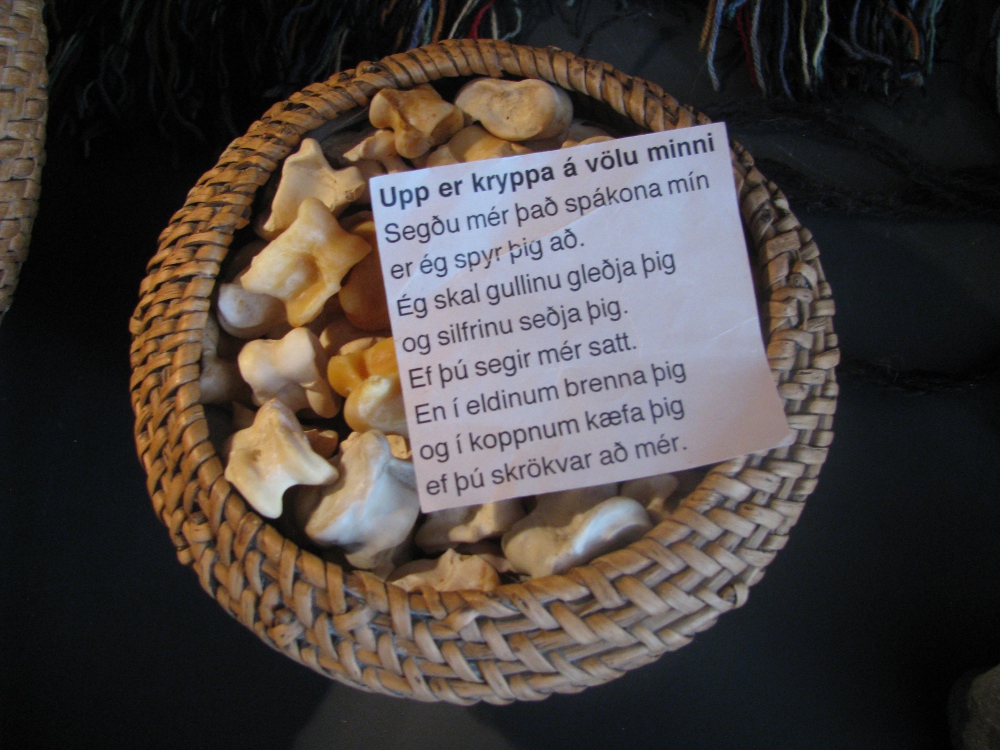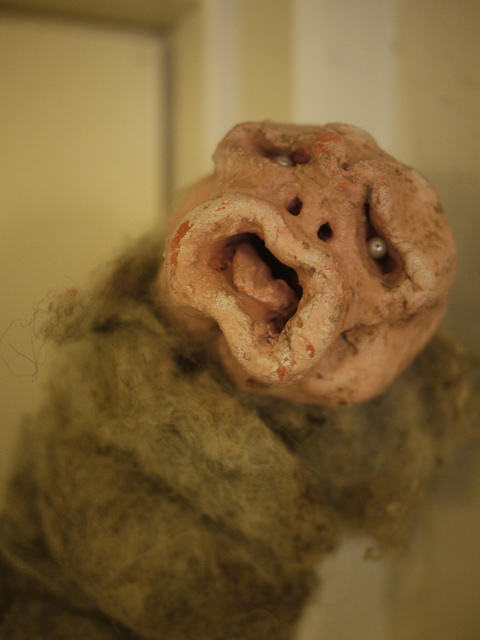Witchcraft in Iceland. Posted by hulda on Oct 17, 2014 in Icelandic culture, Icelandic history
As October is halfway done what better time to write a little about witches? Icelandic ones that is, so alas the pretty ladies riding brooms won’t come into picture. The grand majority of Icelandic witches were male and though female ones did exist and were even punished for witchcraft, fact is that of all of the 21 witches that were executed by burning 20 were male.
Note the wording though, because more than that were executed by other means all depending on the severity of the crime. A more typical way of execution for men was hanging and for women drowning, a punishment that was also used for women who became pregnant out of wedlock. If you visit Þingvellir you’ll see the drowning pool used for this purpose, and far as I’m aware most executions by burning also happened nearby. On the other hand people were often given milder punishments, especially if their suspected crimes had not been successfully proven, had had little effect on the planned victim or were otherwise correctable.
What was then severe enough a reason to merit execution? For women the main thing would have been creating a milk-stealing tilberi, an unusual act of magic in that only women were capable of it. For men the matters were more varied. Causing someone’s death by magic was of course one, although nowadays many such cases seem to boil down to a witch causing a drunken row, being thrown out of the bar, cursing the bar owner who then falls off his horse and breaks his neck. Magic or an unfortunate coincidence in times when an untimely death was a far more common occurrence than now, who knows?
Another crime, even worse, was to create an afturganga of the uppvakningur -type (= a woken-up) and send it to destroy someone. Afturgöngur were ghosts that would follow their target until they had successfully killed them, or in some cases destroyed their sanity. To create one a witch would start by either finding a fresh corpse no one had noticed, or selecting a victim, killing them in some manner that often suggests making the victim aware they were being killed such as drowning them, bringing their body back to un-life and start giving it orders. The big risk in creating an afturganga was that if it ran out of people its maker had pointed out for it to destroy it would return to its master and kill him instead.

One of Iceland’s most famous afturganga, Djákninn á Myrká – although he most likely woke up all on his own!
Witches did not necessarily kill their victims every time someone angered them, not immediately at least. More typical was to simply make the target ill, possibly in a humiliating manner such as was the case with Jón Jónsson the younger who was said to have drawn fart runes against a woman. This was seen not only as public humiliation but also a sneaky attempt at her life, seeing how easily stomach problems could lead to death in the time.
Harming someone’s farm animals was definitely on the list of the worst offenses. Especially milk-giving animals, which is quite understandable considering what life was like in Iceland back in the day. Running out of food in the middle of the winter was one of the worst things that could have happened so although it doesn’t seem quite worth a death sentence now, your ordinary 1600’s Icelander would strongly agree with the punishment.
Simply learning magic could on occasion be punishable by death, but let’s not forget that one of Iceland’s most-loved, legendary heroes was Sæmundur fróði Sigfússon, Sæmundur the Wise, a priest who had apparently learned his skills from none other than the devil himself! And though the records of criminals may include accusations of f.ex. rune-writing, the act itself was not punishable. Carving runes or magical staves was only considered evil if they were used to harm someone.
Did people ever file false accusations against each other? Oh yes they did. In fact Icelanders seem to have treated each witch accusation with suspect. An example can be made of Jón Jónsson and his father, also Jón Jónsson, who were both executed by burning. The accuser, pastor Jón Magnússon, was awarded their earthly belongings after the execution. He continued by suing the daughter of Jón Jónsson elder but this time the accused was found innocent and she eventually counter-sued, and was awarded the pastor’s belongings as compensation.
Let me introduce you an archetype of and Icelandic witch, Galdra-Loftur or Loftur the Magician, a man who thoroughly sums up how Icelanders saw witches to be like. Ruthless, power-hungry and stopping at nothing to further his means, Galdra-Loftur is one of the most famous examples – but we’ll return to his story next week in full detail!
Meanwhile why not read more creepy stuff about Iceland?
Draugasetrið, the haunted ghost museum. A museum that reputedly has ghosts; you’re allowed to try sleeping one night in a haunted area but so far no one’s lasted through a night.
The moon is shining, the dead man’s riding. The story of the horseman whose photo you saw in this post, a man who couldn’t let go of his love.
The heartbroken girl who became a legend. A similar, although scarier story of a woman who couldn’t let go of hers… and she was a real person, not just a ghost story.

Build vocabulary, practice pronunciation, and more with Transparent Language Online. Available anytime, anywhere, on any device.
About the Author: hulda
Hi, I'm Hulda, originally Finnish but now living in the suburbs of Reykjavík. I'm here to help you in any way I can if you're considering learning Icelandic. Nice to meet you!







Comments:
Randy Gordon:
My Great grandfather, his parents and grandparents came from Iceland. (To Utah) A small town called Spanish Fork. It is one of a few places settled by Icelanders in the US. I was born there also. I laugh because it is wonderful to look back and realize that some things in our family were not the same as others. My aunt would wish away warts! It worked! She had to spit on a string. She died a few months back and I believe she took the spell with her? They can only pass it along once. My grandma taught me a few. Oh, I wish I would have realized how important it was to get as much information as possible! She would also read tea leaves. My one aunt was teaching the Sunday school how plants have spirits. They all had never heard that one in a Mormon church. I wonder????????? Well, I think it is great I think there are still a lot of Icelandic influences even after all theses years! I need to go there!
hulda:
@Randy Gordon That’s fascinating family history! It’s true that knowledge on some spells etc. run in families or are passed on to another person who’s seen as suitable for the information. In Icelandic tradition not only plants but everything in the nature has a life force of its own. This is why vikings were banned by law to have dragon heads still attached to their ships when they returned home to Iceland: the dragon heads were meant to scare away the spirits of land so they wouldn’t aid the people living there, and naturally no one wanted to scare away land spirits of their own home country.
Karly:
@hulda Awe my Amma read tea leaves as well! I too wish I had gained more knowledge from them!